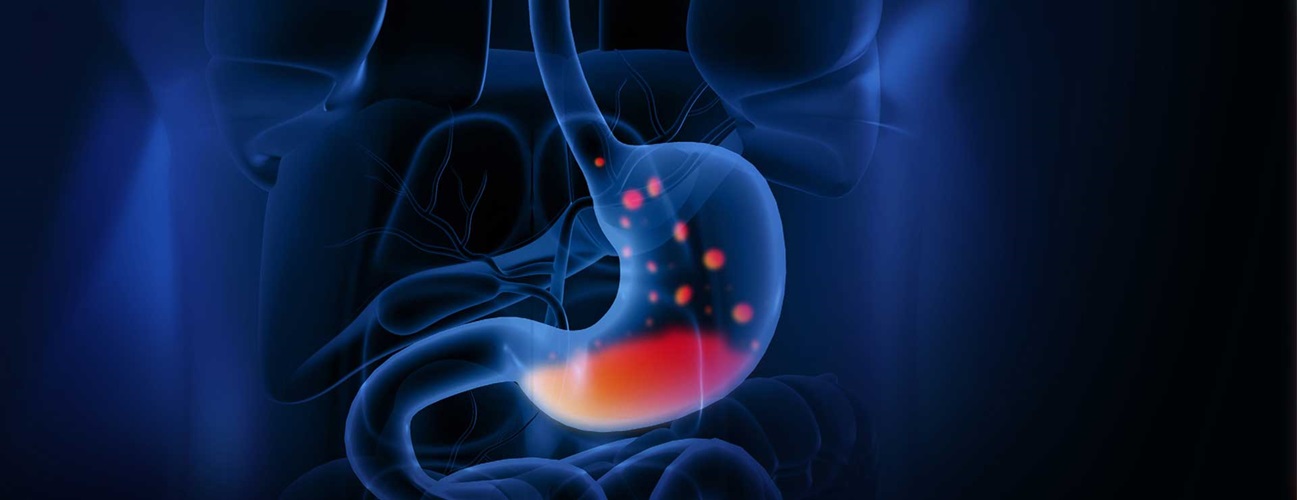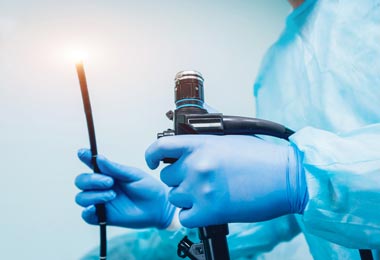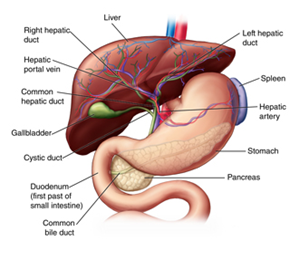Wireless Esophageal pH Test (Bravo Test)
If you have acid reflux, your doctor might recommend wireless esophageal pH test, also known as Bravo pH test, to measure acidity in the esophagus (the passageway between your mouth and stomach).
What You Need to Know
- Wireless pH testing involves a capsule placed in the esophagus. The capsule contains a tiny battery, acid (pH) sensor, and a transmitter.
- You can eat and drink as normal and continue your regular daily activities with the capsule in place.
- The sensor in the capsule sends information to a receiver that you wear around your waist.
- The device continually measures acid levels in your esophagus for up to 96 hours, which is longer than most other tests for esophageal acid reflux.
What is a wireless esophageal pH test?
Wireless pH testing is a minimally invasive test to help diagnose and assess symptoms of gastroesophageal reflux disease (GERD) and effectiveness of GERD treatment. Using an endoscope (a narrow tube with a camera) while you are under sedation, a doctor clips a small capsule (about a size of a pencil eraser) to the lower part of your esophagus.
The sensor probe in the capsule measures and records acid levels (pH) at that location over time, and the transmitter sends the information to a recording device you wear on a belt. Your doctor downloads this data and uses it to assess the severity of the reflux.
Bravo Esophageal pH Test | What You Need To Know
What is normal pH in the esophagus?
The normal pH for the esophagus is close to 7.0. Esophageal pH monitoring looks for lower readings (such as below 4.0) over the course of 30 seconds, indicating higher acidity. High acidity in the esophagus means a surge of stomach acid.
Who may need wireless esophageal pH test?
A doctor may recommend a wireless esophageal pH test if you have symptoms of GERD, such as heartburn or regurgitation (food coming back up into the esophagus) that are not relieved by medication. The test can also help your doctor assess how well your medication is working to relieve the GERD.
You also might undergo wireless pH testing before having a transoral incisionless fundoplication (TIF) procedure.
Your doctor may consider another esophageal pH test instead of or in addition to wireless pH capsule testing, such as:
Wireless pH Testing Versus 24-Hour pH Impedance Testing
There are several ways to test acidity in the esophagus. Wireless esophageal pH testing is a more comfortable alternative to the 24-hour pH impedance test, which requires you to have the capsule wired through your nose to the recording device.
Each test has its own pros and cons besides how comfortable it is. While a wireless pH test measures acidity only, the 24-hour pH impedance test can measure other types of reflux in the esophagus. It can also take measurements throughout the esophagus and not just in a single spot, unlike with wireless pH testing. Meanwhile, the wireless pH test records data over a longer period of time (up to 96 hours), which means more data to analyze.
Preparing for a Wireless Esophageal pH Test
You doctor will provide the exact instructions to follow before the Bravo test. You might need to temporarily stop using medications that suppress stomach acid for about a week before the test. Or, your doctor may ask you to stay on your regular medications so the test can show how well they are working.
Be sure to alert your doctor about any allergies — especially nickel allergy — as the capsule contains a small amount of nickel.
Since you will be given anesthesia to place the capsule in your esophagus, you should arrange for someone to take you home after the procedure.
What happens during a wireless esophageal pH test?
- A health care provider inserts an IV into your vein to deliver fluids, anesthesia and antibiotics.
- Once you are asleep from the anesthesia, your doctor passes the endoscope through the mouth and into the esophagus.
- The catheter with a wireless capsule is passed through the mouth and attached to the lining of the esophagus with a clip, then the catheter is removed.
- Once you recover from sedation and your doctor determines you are OK, you can be driven home.
- The capsule gathers data from inside the esophagus for up to 96 hours. The sensor monitors the acid in the esophagus and transmits the information to a recorder that you wear on a belt.
- You are free to go about your usual activities, including eating, sleeping and working. You will be asked to track your meals, periods of lying down and symptoms by pushing buttons on the recording device and noting the activities in a special diary.
- The wireless pH testing capsule is disposable. In four to ten days after the start of the test, the capsule will fall off of the esophagus and pass harmlessly through the digestive system. It’s safe to flush the capsule down the toilet.
- You will return the recorder to the doctor, who will download and interpret the results, which may take several days.
- Your doctor will discuss the findings of the test, and, based on the data, recommend further tests or a plan to address your symptoms.
Side Effects and Complications of Wireless pH Testing
Wireless esophageal pH testing is very safe. In some people, the capsule device may cause a vague sensation in the chest or discomfort when swallowing, especially when swallowing food. In rare cases, the capsule can cause chest pain and has to be removed by endoscopy.
People with pacemakers, implantable defibrillators or neurostimulators cannot use wireless esophageal pH monitoring.
You must avoid having an MRI (magnetic resonance imaging) during the test and for 30 days after.
There are groups of people for whom wireless esophageal pH testing may pose other risks, or for whom capsule use has not been studied sufficiently. If any of the following apply to you, your doctor may recommend using a different diagnostic test.
- Narrowing, inflammation or other type of obstruction in the esophagus
- Previous surgery on the esophagus
- History of bleeding
- Difficulty swallowing (dysphagia)
- Esophageal varices (enlarged blood vessels)






